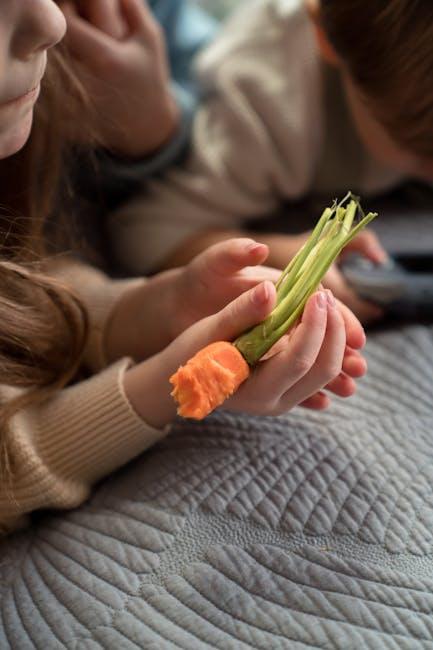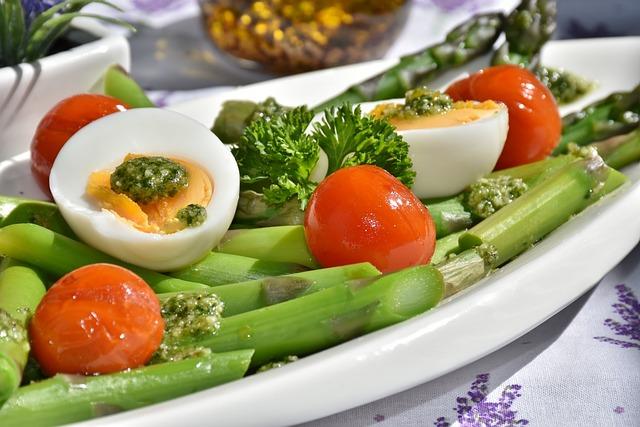In a world where dietary choices are as varied as the cultures that inspire them, the question of whether children should follow a plant-based diet emerges as both a modern curiosity and a subject of earnest debate. As parents navigate the labyrinth of nutrition, health, and ethical considerations, the prospect of raising children on a plant-based regimen is increasingly taking center stage. Advocates highlight the potential benefits of such a diet, from fostering a love for fruits and vegetables to promoting environmental consciousness. Meanwhile, skeptics raise concerns about meeting the nutritional needs crucial for growth and development. This article delves into the multifaceted discussion, exploring the scientific, ethical, and practical dimensions of plant-based diets for children, aiming to provide a balanced perspective on this evolving dietary trend.
Nutritional Essentials for Growing Minds and Bodies
When considering a plant-based diet for children, it’s essential to focus on delivering a balanced array of nutrients that support both cognitive development and physical growth. Key nutrients such as protein, iron, calcium, and vitamins like B12 and D are crucial for young, developing bodies. Here are some plant-based sources that can ensure these essentials are met:
- Protein: Lentils, chickpeas, quinoa, and tofu are excellent sources of plant-based protein that can help build and repair tissues.
- Iron: Leafy greens, beans, and fortified cereals can help maintain healthy blood and energy levels.
- Calcium: Almond milk, fortified plant milks, and broccoli are important for developing strong bones and teeth.
- Vitamin B12: Nutritional yeast and fortified foods can help in maintaining nerve function and producing DNA.
- Vitamin D: Sunlight exposure and fortified plant milks can aid in calcium absorption and bone health.
Incorporating these nutrient-rich foods into a child’s diet can foster both a healthy body and a sharp mind. Creativity in meal planning and involving kids in the cooking process can also make plant-based eating more appealing and sustainable for young eaters.

Balancing Act: Ensuring Adequate Protein and Calcium Intake
In the quest to ensure that children following a plant-based diet receive sufficient protein and calcium, creativity in meal planning becomes key. Protein can be sourced from a diverse range of plant-based foods. Consider incorporating options like:
- Legumes: Lentils, chickpeas, and black beans are not only protein-rich but also versatile in various dishes.
- Quinoa and Amaranth: These pseudo-grains provide complete protein profiles and are easily integrated into salads or as side dishes.
- Tofu and Tempeh: These soy products can be seasoned to mimic the flavors and textures of many traditional dishes.
- Nuts and Seeds: Almonds, chia seeds, and hemp seeds can be added to smoothies or yogurt for an extra protein boost.
For calcium, it’s essential to explore plant-based sources that fit seamlessly into a child’s diet. Some excellent choices include:
- Fortified Plant Milks: Many brands offer almond, soy, or oat milk enriched with calcium and vitamin D.
- Leafy Greens: Kale, bok choy, and collard greens are packed with calcium and can be used in salads or stir-fries.
- Broccoli and Edamame: Both are kid-friendly and can be enjoyed steamed or in a veggie medley.
- Calcium-Set Tofu: This variety of tofu is made using calcium sulfate, making it a double-duty source of protein and calcium.
By thoughtfully combining these ingredients, parents can ensure that their children’s plant-based diet is both nourishing and enjoyable.

Navigating Social Situations and Peer Pressure
For children embracing a plant-based diet, social gatherings can sometimes feel like navigating a culinary maze. Whether it’s a birthday party or a school lunch, kids might face questions and comments about their food choices. Open communication is key. Encouraging children to share their dietary preferences with friends and educators can help ease potential misunderstandings. Providing them with simple responses to common questions can boost their confidence in social settings.
Peer pressure can also play a significant role. Kids might encounter situations where they feel compelled to eat what everyone else is having. Here are some strategies to help them stay true to their dietary choices:
- Role-playing different scenarios at home to prepare for real-life situations.
- Equipping them with tasty plant-based snacks to share, which might pique curiosity and encourage acceptance among peers.
- Reinforcing the importance of personal choice and health, ensuring they understand their reasons for a plant-based diet.
By empowering children with knowledge and strategies, they can navigate social situations with ease and confidence.

Practical Tips for Parents Embracing Plant-Based Choices
Transitioning your family to a plant-based lifestyle can be a rewarding journey, filled with opportunities to explore new flavors and nutritional benefits. To make this transition smoother, here are some practical tips that can help:
- Start Slowly: Begin by incorporating more plant-based meals into your weekly routine. Consider introducing “Meatless Mondays” or swapping out a few dinners each week for plant-based options.
- Involve the Kids: Engage your children in the meal planning and preparation process. Let them pick out fruits and vegetables at the grocery store, and encourage them to help in the kitchen. This not only makes them more excited about the meals but also educates them on the importance of nutrition.
- Experiment with Recipes: Try new recipes that highlight the versatility of plant-based ingredients. From hearty lentil soups to colorful vegetable stir-fries, there are countless dishes that can satisfy even the pickiest eaters.
- Focus on Nutrients: Ensure your kids are getting the necessary nutrients by incorporating a variety of foods like beans, nuts, seeds, and leafy greens. Consider consulting a nutritionist to ensure a balanced diet.
By making small, thoughtful changes, you can nurture a positive relationship with food and instill healthy eating habits in your children that last a lifetime.
To Conclude
As we navigate the verdant landscape of dietary choices for our children, the question of whether kids should follow a plant-based diet remains a multifaceted puzzle. With considerations ranging from nutritional adequacy to ethical beliefs, environmental impact, and personal health, each family must weigh these factors against their own values and circumstances. Ultimately, the decision is not one-size-fits-all but rather a tapestry woven with individual threads of information, family dynamics, and future aspirations. As we continue to explore and learn, may our choices be guided by a balanced blend of knowledge, compassion, and an openness to the ever-evolving story of nutrition.

































